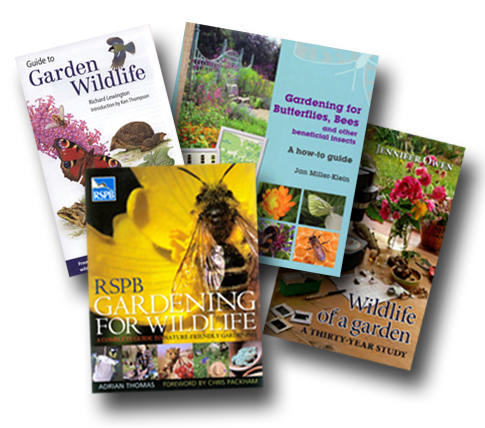With wildlife conservation high on everyone’s agenda, here are some recommendations to introduce you to the natural diversity of your garden, and help you to create a haven for wildlife on your doorstep:

Guide to Garden Wildlife, by Richard Lewington, is a field guide to all the wildlife you might expect to encounter in the garden – from mammals, birds and insects to invertebrates and pond life. The species descriptions are full of useful detail, and Lewington provides the intricate illustrations that make this a real treasure of a handbook. There are informative sections on garden ecology, nest-boxes and bird feeders, and creating a garden pond.
Gardening for Butterflies, Bees and Other Beneficial Insects, by Jan Miller-Klein, homes in on practical techniques for encouraging insect diversity in your garden. A large-format tour through the seasons, with additional sections on tailored habitats, and species-appropriate planting, this beautifully photographed guide is perfect for every bug-friendly gardener looking to provide a good home for the full range of insect life.
RSPB Gardening for Wildlife: A Complete Guide to Nature-friendly Gardening, by Adrian Thomas, is a fantastic encyclopaedic introduction to how best to provide for the potential visitors to your garden, while maintaining its function for the family. A species-by-species guide to the ‘home needs’ of mammals, birds, insects and reptiles is followed by a substantial selection of practical projects, and helpful hints and appendices, to get your garden flourishing – whatever its size.
